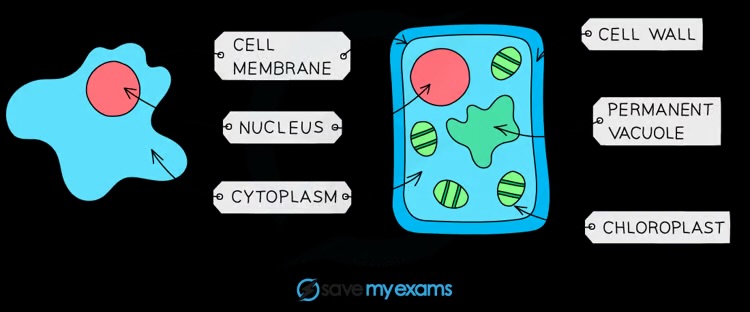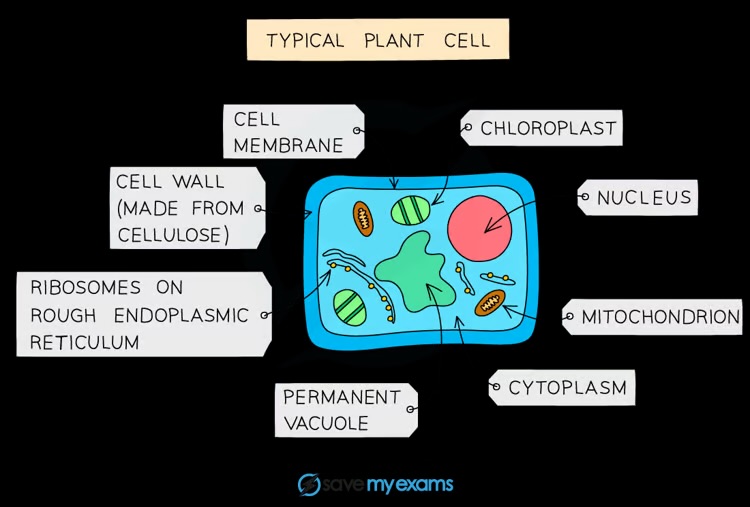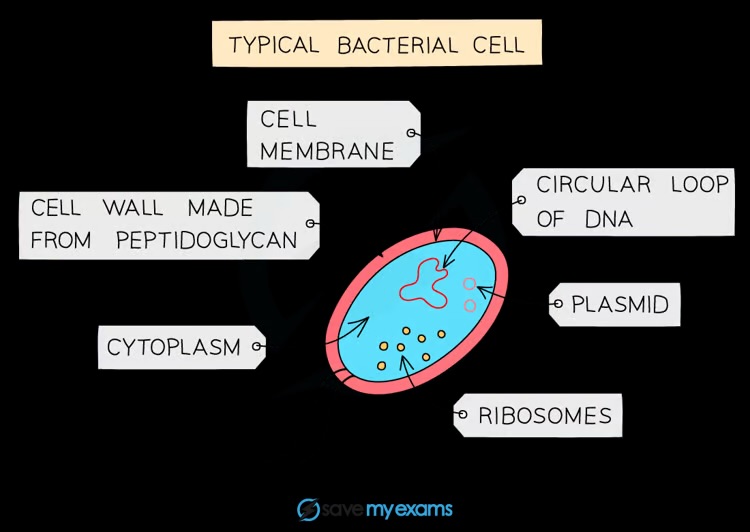unit 2 bio - Organisation of the Organism
1/28
Earn XP
Description and Tags
Name | Mastery | Learn | Test | Matching | Spaced |
|---|
No study sessions yet.
29 Terms
What structures are found in both plant and animal cells?
Cell membrane, nucleus, cytoplasm, ribosomes, mitochondria

What structures are unique to plant cells?
Cell wall, chloroplasts, large central vacuole

What structures are found in bacterial cells?
Cell wall, cell membrane, cytoplasm, ribosomes, circular DNA, plasmids

What is the function of the cell wall?
Provides structural support and protection
What is the function of the cell membrane?
Controls what enters and leaves the cell
What is the function of the nucleus?
Contains genetic material and controls cell activities
What is the function of the cytoplasm?
Site of chemical reactions
What is the function of chloroplasts?
Site of photosynthesis; contains chlorophyll
What is the function of ribosomes?
Site of protein synthesis
What is the function of mitochondria?
Site of aerobic respiration; releases energy
What is the function of the vacuole in plant cells?
Maintains cell turgor; stores cell sap
What is the function of circular DNA in bacteria?
Carries genetic information; controls cell activities
What is the function of plasmids in bacteria?
Carry extra genes, often for antibiotic resistance
How are new cells produced?
By division of existing cells
What is the function of ciliated cells?
Move mucus in the trachea and bronchi
What is the function of root hair cells?
Absorb water and minerals from soil
What is the function of palisade mesophyll cells?
Carry out photosynthesis
What is the function of neurones?
Conduct electrical impulses
What is the function of red blood cells?
Transport oxygen using haemoglobin
What is the function of sperm and egg cells?
Reproduction
What is a cell?
The basic unit of life (e.g. red blood cell)
What is a tissue?
A group of similar cells working together (e.g. muscle tissue)
What is an organ?
A structure made of different tissues performing a function (e.g. the heart)
What is an organ system?
A group of organs working together (e.g. the digestive system)
What is an organism?
A living thing made of organ systems
What is the formula for magnification?
Magnification = image size ÷ actual size
How do you calculate magnification?
Divide the image size by the actual size (in mm)
How many micrometres are in 1 millimetre?
1000 micrometres (μm)
How many millimetres are in 1 micrometre?
0.001 millimetres (mm)